The United States has been increasing spending and deficits since long before the Covid-19 crisis. The situation is now reaching positively cosmic proportions …
Let’s put our dear Europe aside for a few articles. Today, I suggest you take a break and look at the fate of our American cousins, and especially their public debt.
I broached this subject in August 2019 through a series of five posts (see here, here, here, here and there), of which it does not seem unnecessary to offer you a quick summary.
US federal debt: “in previous episodes …”
The American federal state is in the grip of two chronic difficulties. As public revenues are lower than public charges, the United States is subject to a budget deficit.
Moreover, with inflows of money lower than outflows, US current accounts are in the red. This is called the “twin deficits” (” twin deficits »).
Since domestic savings are not sufficient to absorb the financing needs of the American economy, the United States must call on foreign savings to finance its economy, thus maintaining the vicious circle of debt.
The last time I raised the issue, the US public debt stood at $ 22,000 billion.
Raising the debt ceiling after raising the debt ceiling, this is the level that the US counter showed at the end of 2018.
“I’m going to tell you a really funny joke: debt ceiling. Ha ha. “
Various … but colossal forecasts
The US Treasury predicted that the budget deficit would exceed the symbolic amount of $ 1,000 billion in 2020 (i.e. more than 10% of GDP), with interest on the public debt expected to reach a new record at $ 591 billion in 2019. .
The US Congressional Budget Office (CBO) expected the amount of federal debt to reach 140% of US GDP by 2049.
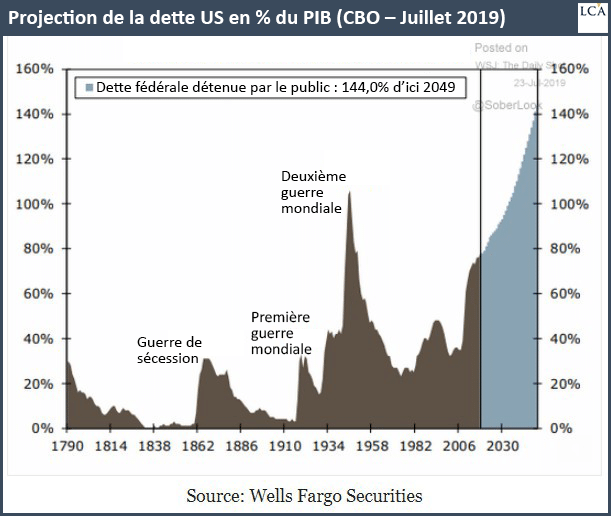
However, the situation remained “under control” since the interest expenditure on the American debt did not yet exceed the primary deficit (that is to say before taking into account the interest on the debt).
However, according to the projections made at the time by the Office of Debt Management of the US Treasury, “the primary deficit will become almost zero in 2024 and, from that date, every dollar borrowed by the government will be used to finance the payment. interest on the federal debt, leaving the government at the mercy of changes in interest rates… ”I summed up in August 2019.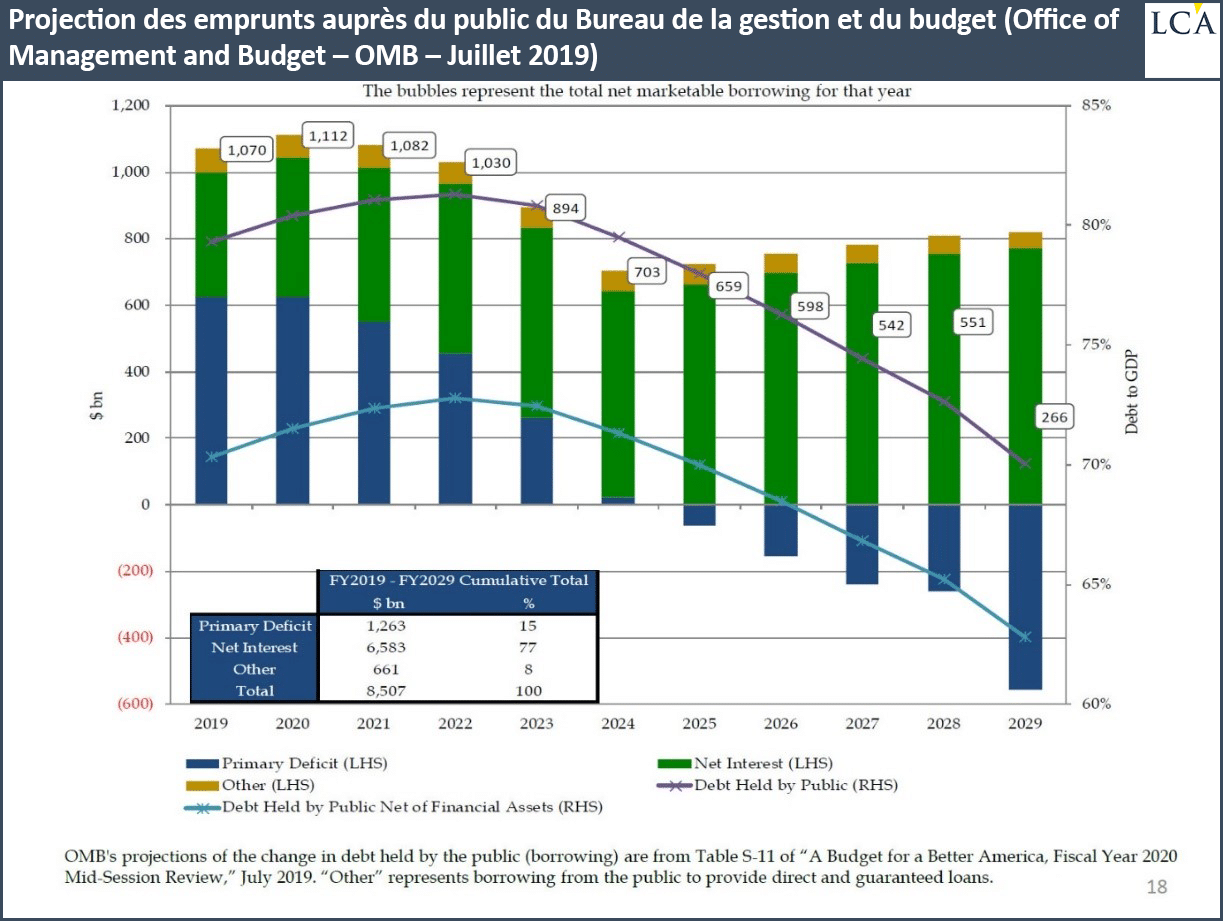
Death spiral
All other things being equal, the United States therefore had another four years before it entered a “death spiral”.
Already at the time, the American budget cavalry was struggling to obtain financing from abroad. The days when China filled the US external deficit are over since 2014; it was now the European Union – and in particular Germany – which saved the American federal state from a serious crisis by becoming a net buyer of Treasury securities.
The trend was not reassuring, however, since the outstanding amount of US Treasuries held by non-residents had been declining since 2015. In other words, it had been four years since the rest of the world had bought less. T-Bonds than he was selling.
Some commentators already spoke of the prospect of a “Minsky moment” with the advent of a new paradigm: rising inflation expectations.
So, according to the ZeroHedge site:
“Any incremental increase in interest rates, which will happen simply as a result of rising inflation expectations, will only accelerate the Ponzi scheme whereby more debt securities are sold just to fund the growing interest on the market. debt, which requires producing more debt, and so on, until the “Minsky moment” finally arrives. “
The rise in inflation expectations is indeed one of the events likely to trigger the transition from the phase of stability bought on credit, to the phase of instability and the financial collapse that follows with the evaporation of the investor confidence in the central bank.
I concluded this series of five articles by explaining why there would be no US public debt crisis… as long as the dollar retained its status as the world’s reserve currency.
Twin deficits, public debt, debt burden, foreign demand for Treasury securities, inflation expectations and long rates: how has the Covid changed all these trends?
With the transition between the Republican and Democratic administrations now behind us, and Joe Biden’s (first) stimulus plan having been voted on a few weeks ago, the time seems right to me to offer you a new progress point.
Public deficit: “what do we care about the budget?” “
Note that the issue is not whether the United States will be able to repay its public debt – you have to be demagogic like a Mélenchon to profess such nonsense. The question is whether the United States will be able to continue to borrow on the financial markets to roll off its debt.
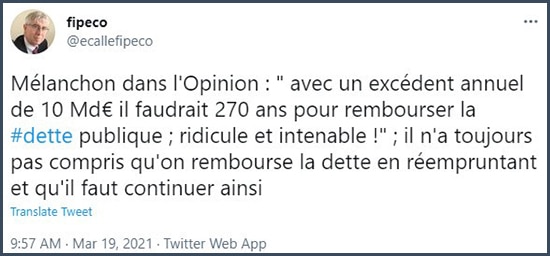
Otherwise, they will have to finance it not by buying back their debt securities on the secondary market, but by buying them directly through their central bank. If so, it would open up a whole new chapter in contemporary financial history.
But back to our sheep.
Even before the Covid arose, we therefore had an American federal state for which deficits had not counted for a long time.
Jan. 18, 2020: “‘What the fuck do we care about the budget?’ Trump told attendees of a private fundraiser, as evidenced by an audio recording obtained by the Washington Post. (The deficit has already grown by 50% under Trump). ”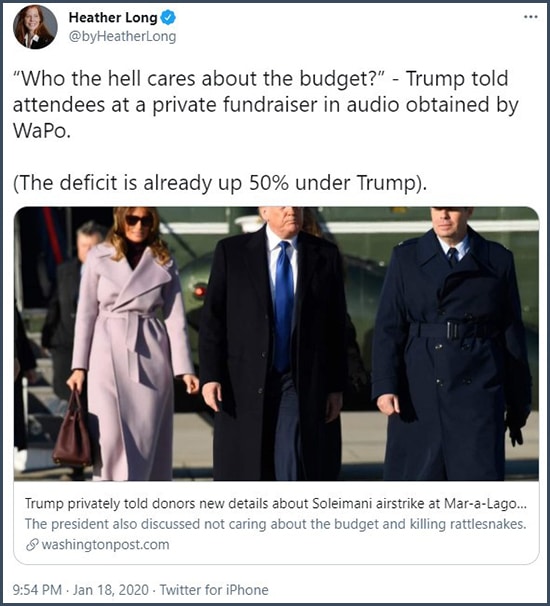
As you can imagine, almost a year and a half later, the situation has not improved. This will come as no surprise, given the budget mantra of the time.
May 11, 2020: Treasury Secretary Steven Mnuchin says on CNBC: “We will take advantage of low rates [pour nous endetter]. »
God knows that the United States has given it to their hearts content. The forecast for a budget deficit of $ 1,000 billion announced for 2020 before the advent of the coronavirus is now playing a small role, since this is precisely the amount of the budget deficit recorded over the period October 2020-February 2021, that is to say say about five months only!
March 10, 2021: the budget deficit reaches a record amount of $ 1,050 billion over five months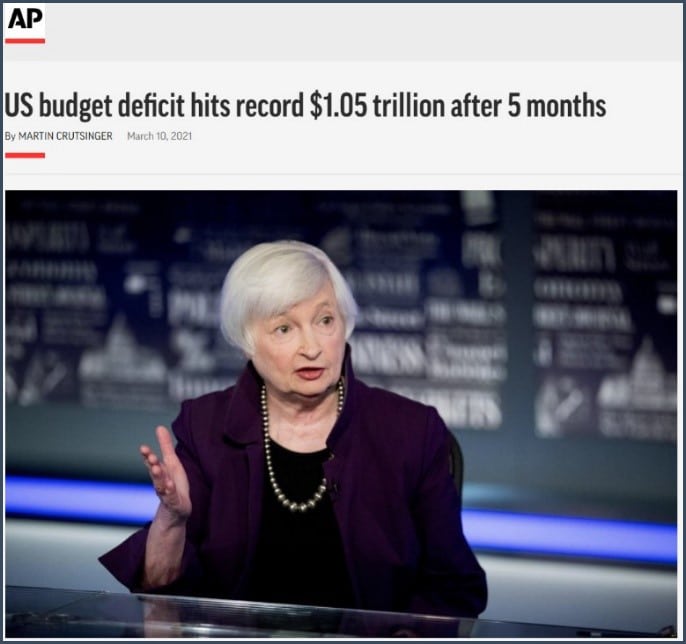
If everything goes as planned by the CBO, for the 2021 financial year, the US budget deficit should reach $ 2.3 trillion, an amount that does not include the $ 1.9 trillion of the Biden plan.
By September 30, 2021 (end of the accounting year), the US budget deficit should therefore be close to $ 4,000 billion, or about $ 1,000 billion more than in 2020 ($ 3,100 billion).
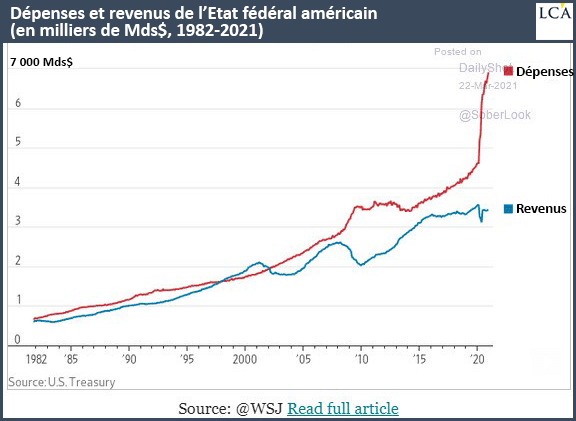
Supermassive black hole
According to the latest figures from Natixis (March 18, 2021), the US public deficit will be around 18% of GDP in 2021, while it was still “only” 4% and wheelbarrows before confinement.
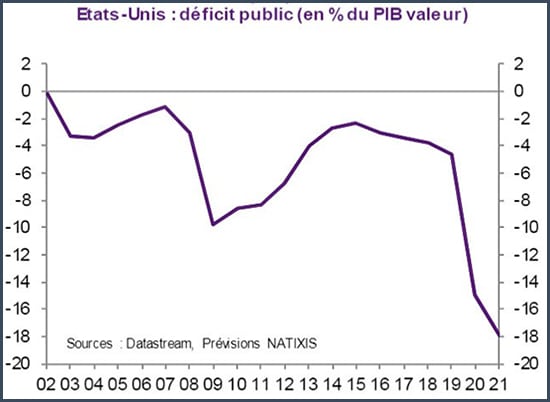
Combine the choice of containment by political power and the appeal of Modern Monetary Theory (MMT) in that same environment, and you end up with a US budget deficit that has never been higher in peacetime.
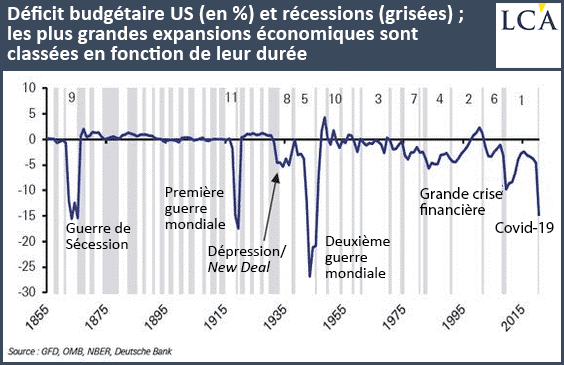
In short, we are no longer very far from the supermassive black hole.
March 16, 2021: “CNN: Supermassive black hole spotted wandering in space”. Sven Heinrich: “News Flash: Researchers have identified the US budget deficit. “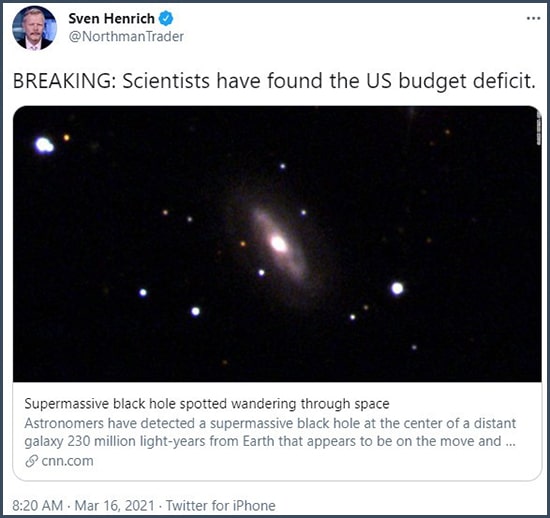
–

